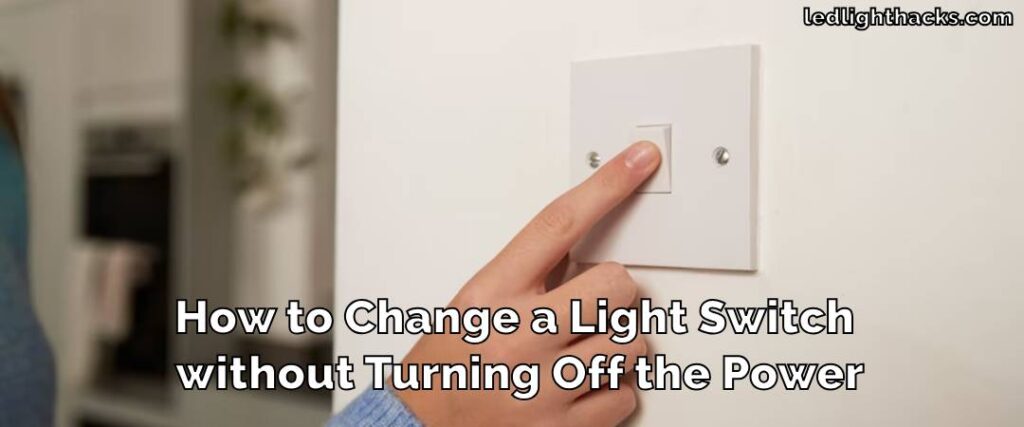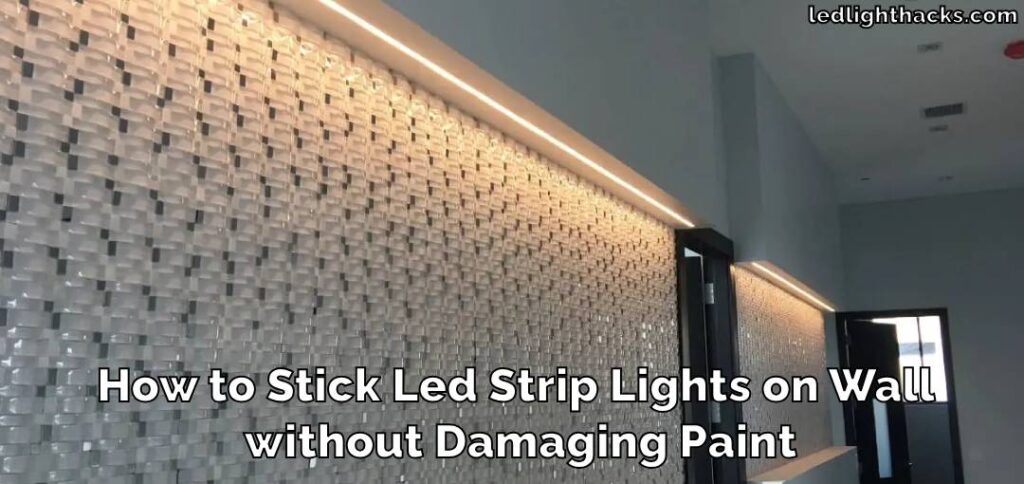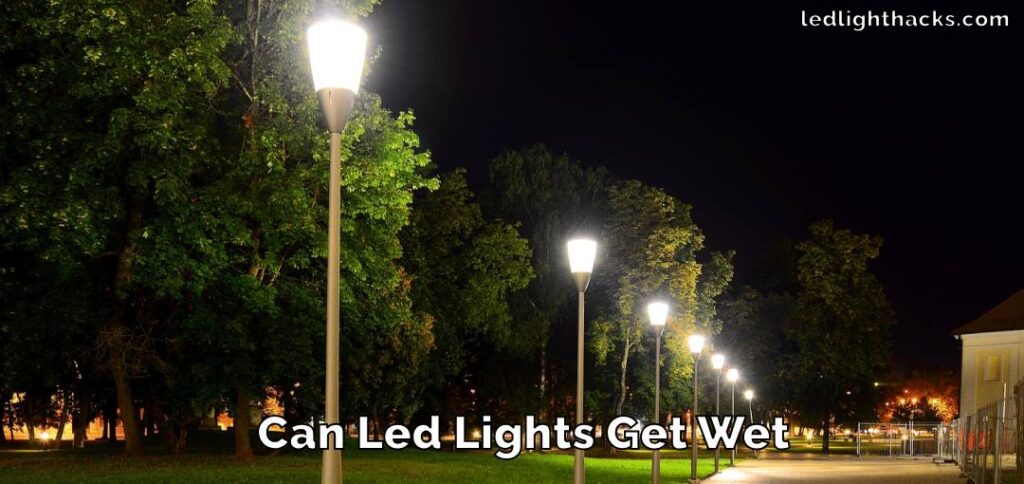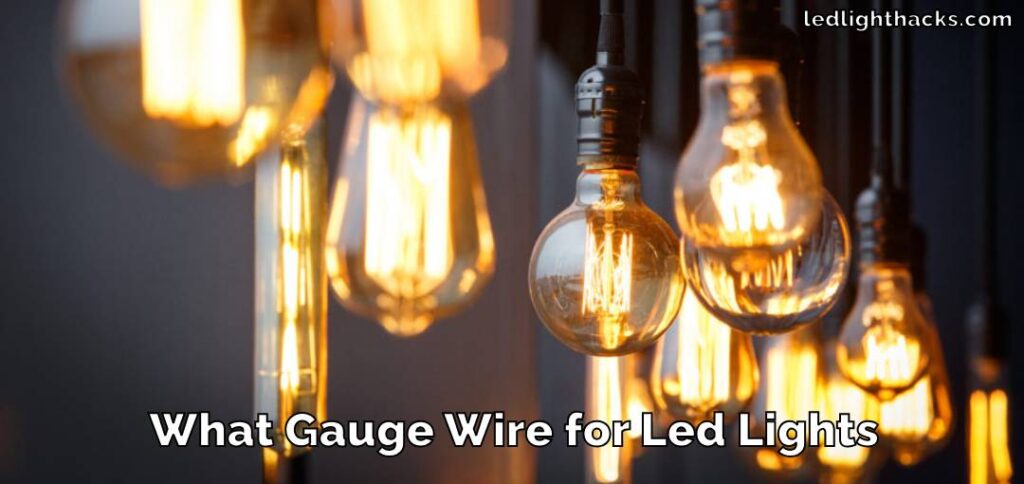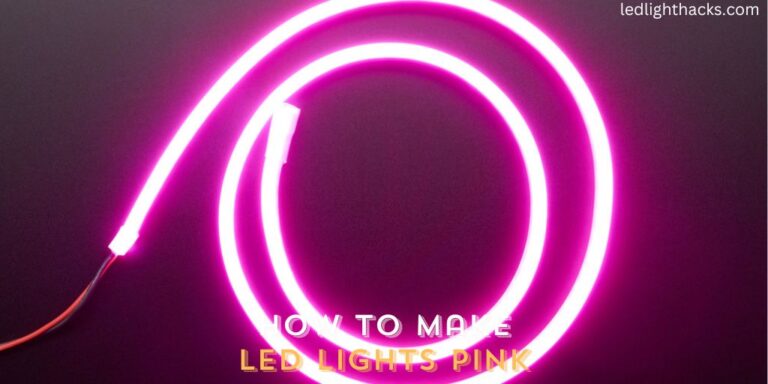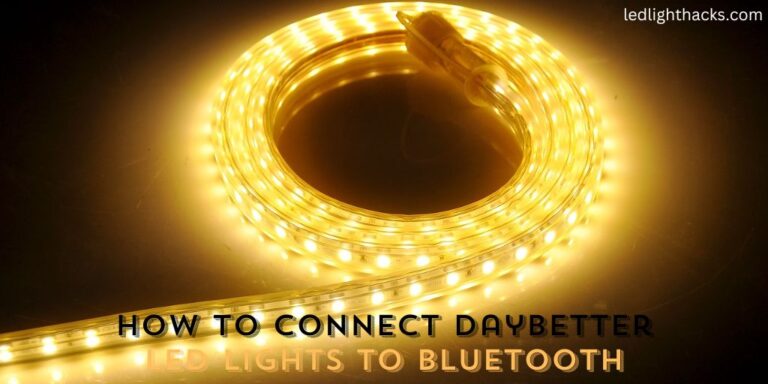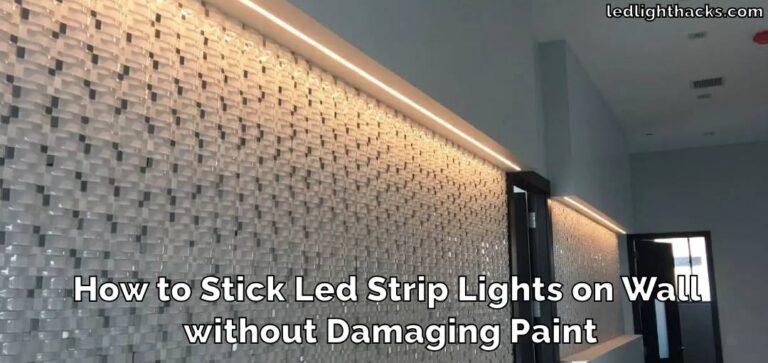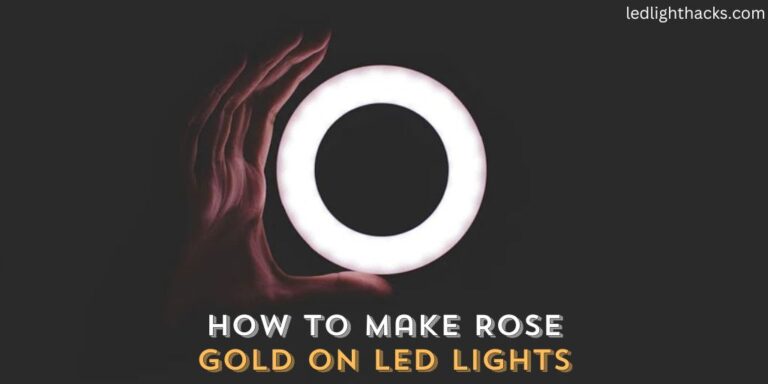Can You Sleep with Led Strip Lights On
Introducing soft, ambient lighting to your bedroom with LED strip lights can be an appealing idea. Many wonder, “Can you sleep with LED strip lights on?”
The answer is Yes, you can sleep with LED strip lights on, but it’s not ideal for promoting the best possible sleep quality. The color and brightness of the LED lights can affect your body’s ability to prepare for sleep by influencing melatonin production. Opting for dimmer, warmer colors can minimize negative effects, but it’s generally better to sleep in a dark environment for optimal sleep health.
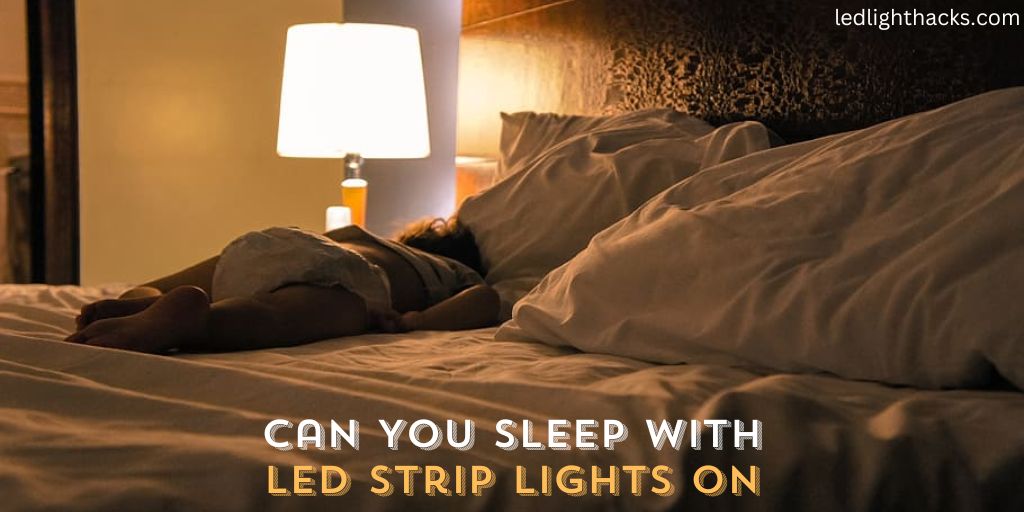
In this article, we’ll explore how LED strip lights might affect your sleep, providing essential insights for those considering adding them to their nighttime environment.
Whether you’re aiming to create a warm, inviting atmosphere or just want to inject some personality into your bedroom, it’s important to know how these lights could interact with your sleep patterns.
What are LED Strip Lights
LED strip lights are a versatile and energy-efficient lighting solution that has gained popularity in home decor. These lights are essentially a sequence of light-emitting diodes (LEDs) on a flexible circuit board.
Capable of emitting various colors and brightness levels, LED strip lights offer an easy way to create ambient lighting in any space.
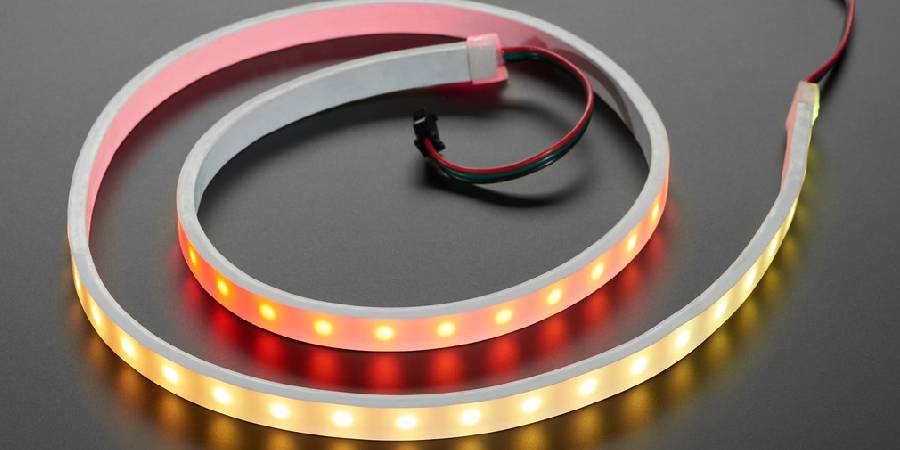
Unlike traditional bulbs, they are slim, can be cut to desired lengths, and are often adhesive, making them simple to install along walls, under beds, or around furniture. Their low power consumption and long lifespan make them an economical and eco-friendly choice for continuous use.
Can You Sleep with LED Strip Lights On
Yes, you can sleep with LED strip lights on, but it might not be the best choice for your sleep quality. While LED strip lights can create a cozy and personalized atmosphere in your bedroom, the light they emit can have an impact on your sleep.
Here’s why: Our bodies have a natural clock, known as the circadian rhythm, that signals when it’s time to be awake and when it’s time to sleep. Light plays a key role in this process. Exposure to light, especially blue light, which is often emitted by LED lights, can interfere with the production of melatonin, a hormone that helps regulate sleep.
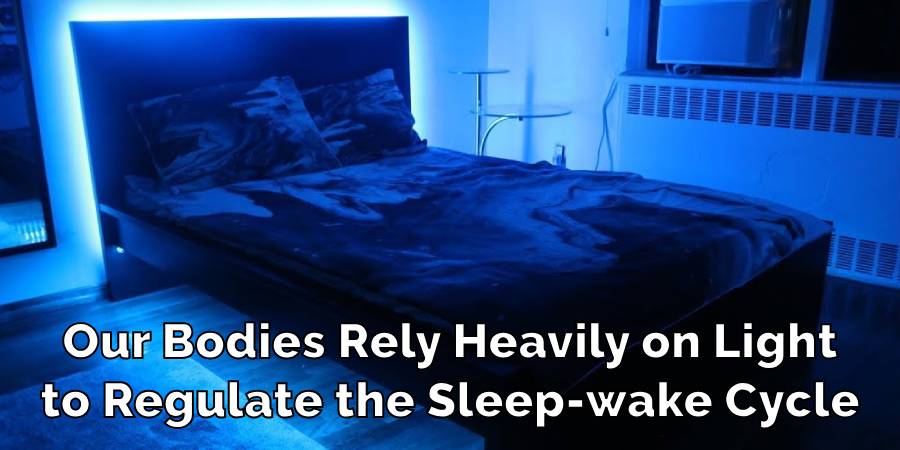
However, not all LED lights are created equal. The effect of LED strip lights on your sleep can vary depending on their color and brightness:
Color
Warmer colors like red and orange have less impact on your sleep cycle compared to cooler colors like blue and white. If you prefer to sleep with LED strip lights on, opting for warmer tones can be a better choice.
Brightness
Bright lights can be more disruptive to sleep. If you choose to keep LED strip lights on at night, dimming them can help minimize their impact on your sleep quality.
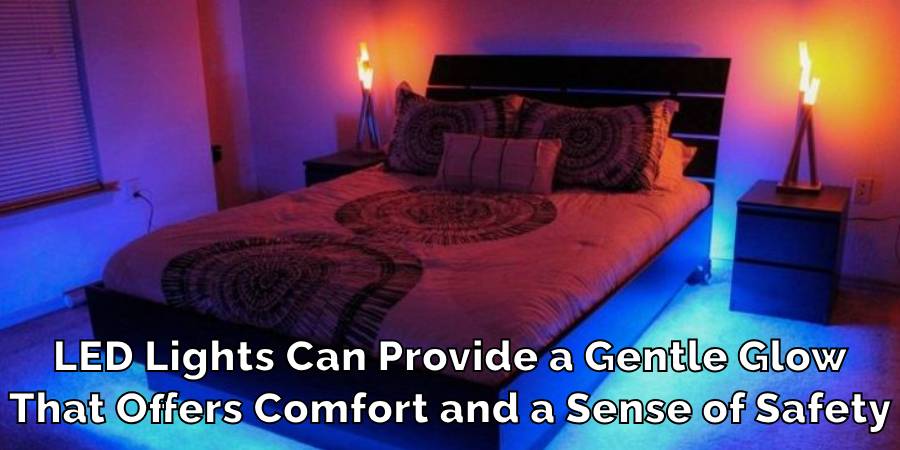
For those who still want to use LED strip lights in their bedroom, here are a couple of tips to reduce their impact on sleep:
- Use a Timer: Set a timer to turn off the lights automatically after you fall asleep.
- Dim the Lights: Use the dimmest setting that still allows you to enjoy the ambiance without too much light.
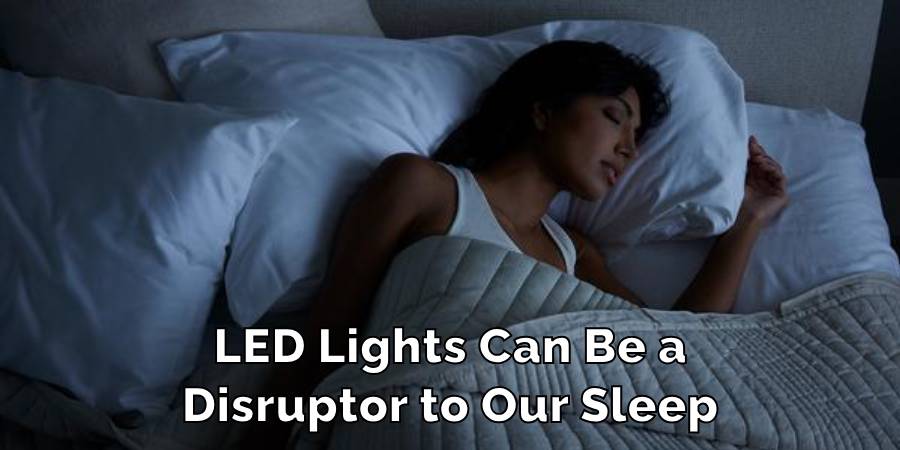
In summary, while sleeping with LED strip lights on is possible, it’s best to use them in a way that minimizes their effect on your sleep. Choosing warmer colors, dimming the lights, and using a timer can help you maintain a cozy bedroom atmosphere without sacrificing your sleep quality.
Expert Opinions and Studies
Sleep specialists agree that limiting exposure to bright and particularly blue light before bedtime is crucial for good sleep. Studies have shown that blue light, often emitted by electronic devices and some LED lights, can disrupt our sleep.
This kind of light affects the production of melatonin, the hormone that helps us sleep. As a result, exposure to blue light can make it harder to fall asleep and can decrease the quality of REM sleep, which is important for memory and recovery.
Research suggests that the intensity and duration of exposure to blue light are key factors. The longer and more intense the exposure, the more our sleep patterns can be disturbed.
In contrast, red and orange lights have minimal impact on sleep, making them better options for evening use. For LED strip lights, choosing adjustable colors and brightness levels is advisable to minimize sleep disruption.
FAQ’s
Is It Ok to Leave LED Strip Lights on All Night?
While LED strip lights are generally safe and have a low risk of overheating or causing electrical issues, leaving them on all night might not be the best idea for everyone. One key reason is the potential impact on sleep quality.
Lights, especially if bright or blue, can disrupt your natural sleep cycle. There’s also the matter of energy consumption. Although LEDs are energy-efficient, keeping them on all night every night adds up in terms of energy use and, consequently, your electricity bill.
Are LED Strip Lights Safe on a Bed?
Yes, LED strip lights are safe to use on a bed as long as they are installed correctly. It’s important to ensure they’re secured properly and not in direct contact with any flammable materials like bedding or curtains. Additionally, make sure the LED strips are of good quality and follow any safety guidelines provided by the manufacturer.
Is It Okay to Sleep With LED Lights?
The suitability of sleeping with LED lights depends largely on their color and brightness. Lights that emit a warm, soft glow are generally considered okay and can even create a relaxing atmosphere in your bedroom.
However, it’s best to avoid bright or blue-toned lights close to bedtime, as these can interfere with your ability to fall asleep and the quality of your sleep.
Where Should You Not Use LED Lights?
LED lights should not be used in tightly enclosed fixtures unless they are specifically designed for such conditions.
LEDs produce heat, and without proper ventilation, they can overheat, which reduces their lifespan and can pose a safety risk. Always check the manufacturer’s guidelines to see if your LED lights are suitable for enclosed spaces.
What Color is Best for Sleeping?
When it comes to sleeping, the best colors for LED lights are red and warm tones. These colors have the least impact on your sleep cycle.
They’re less likely to suppress melatonin production, making it easier for you to fall asleep and stay asleep. In contrast, blue and white lights can make it harder to sleep, as they mimic the brightness of daylight, signaling your brain to stay awake.
Conclusion
Deciding whether to sleep with LED strip lights on depends on personal preference and sensitivity to light. While they offer aesthetic and practical benefits, it’s crucial to consider the potential impact on sleep quality.
Opting for warmer tones and dimmer settings can create a peaceful bedroom atmosphere conducive to rest. Remember, the key to a good night’s sleep lies in balancing comfort and the right sleep environment. This article has answered, “Can you sleep with LED strip lights on?”
By understanding the effects of light on sleep, you can make an informed decision about using LED strip lights in your bedroom, ensuring they add to, rather than detract from, a restful night.
How to Change a Light Switch without Turning Off the Power
Mastering the skill of changing a light switch without turning off the power holds great…
How To Stick LED Strip Lights On Wall Without Damaging Paint
LED light strips have surged in popularity, adorning homes and spaces with their vibrant colors…
Can Led Lights Get Wet
LED lights are everywhere, from homes to city streets, known for their efficiency and brightness….
Creative Ways to Use LED Strip Lights in Your Home
LED strip lights, those brilliant strips of technology, serve as a beacon of innovation in…
Can Solar Lights Catch Fire
Solar garden lights are your go-to pal for lighting up your backyard oasis while keeping…
What gauge wire for LED lights
When diving into LED lighting, one aspect that might not catch your eye at first…

